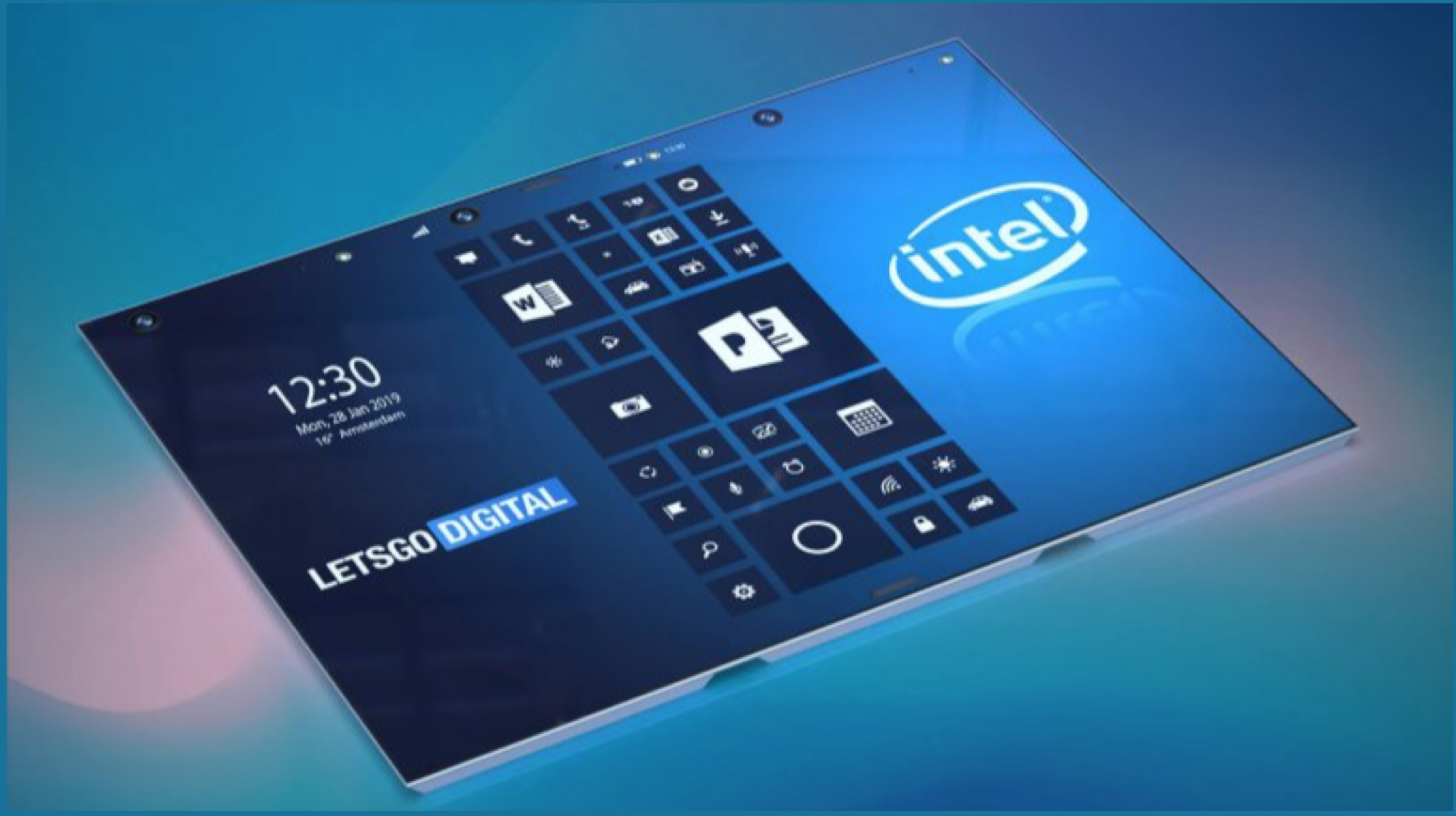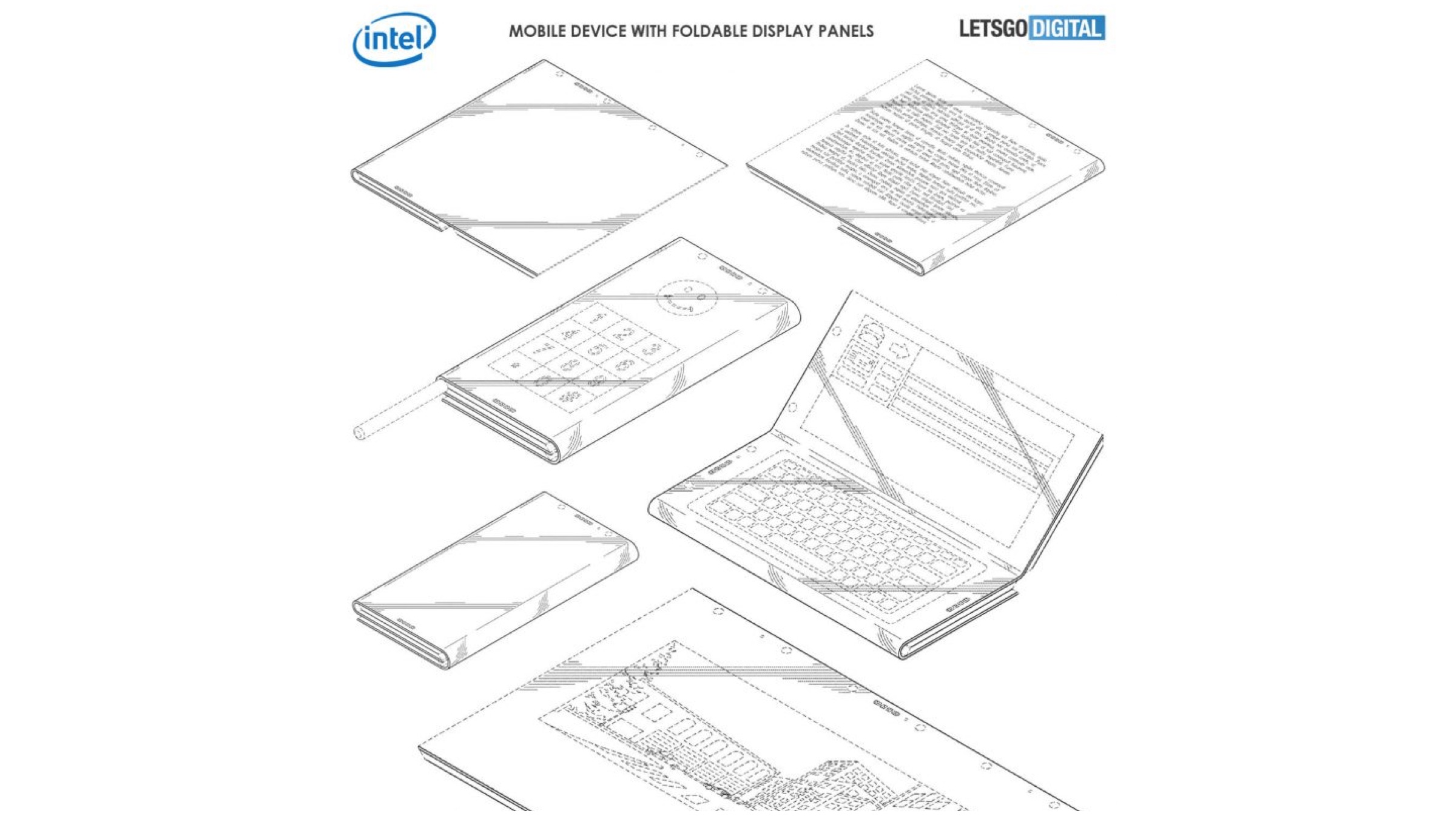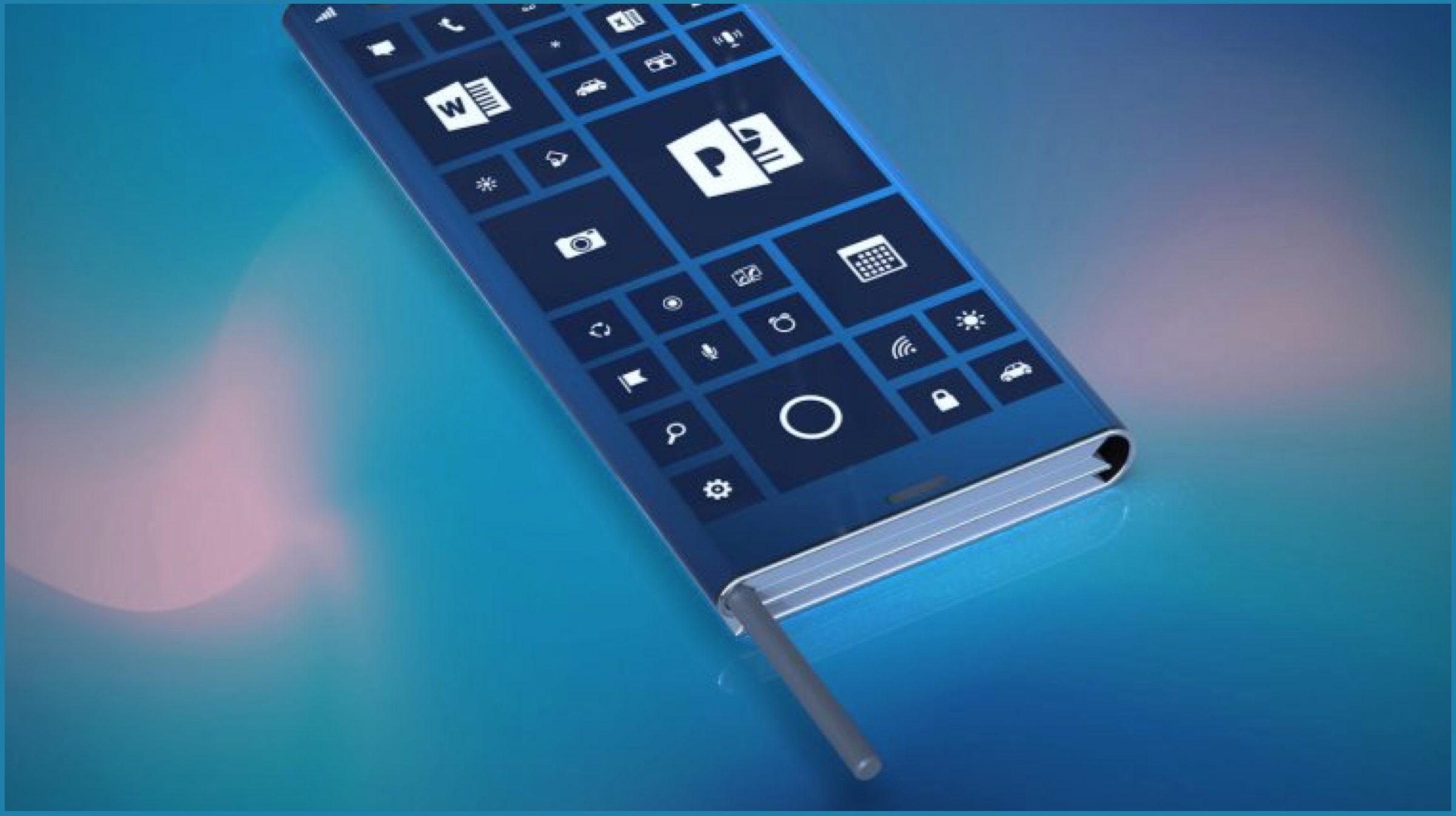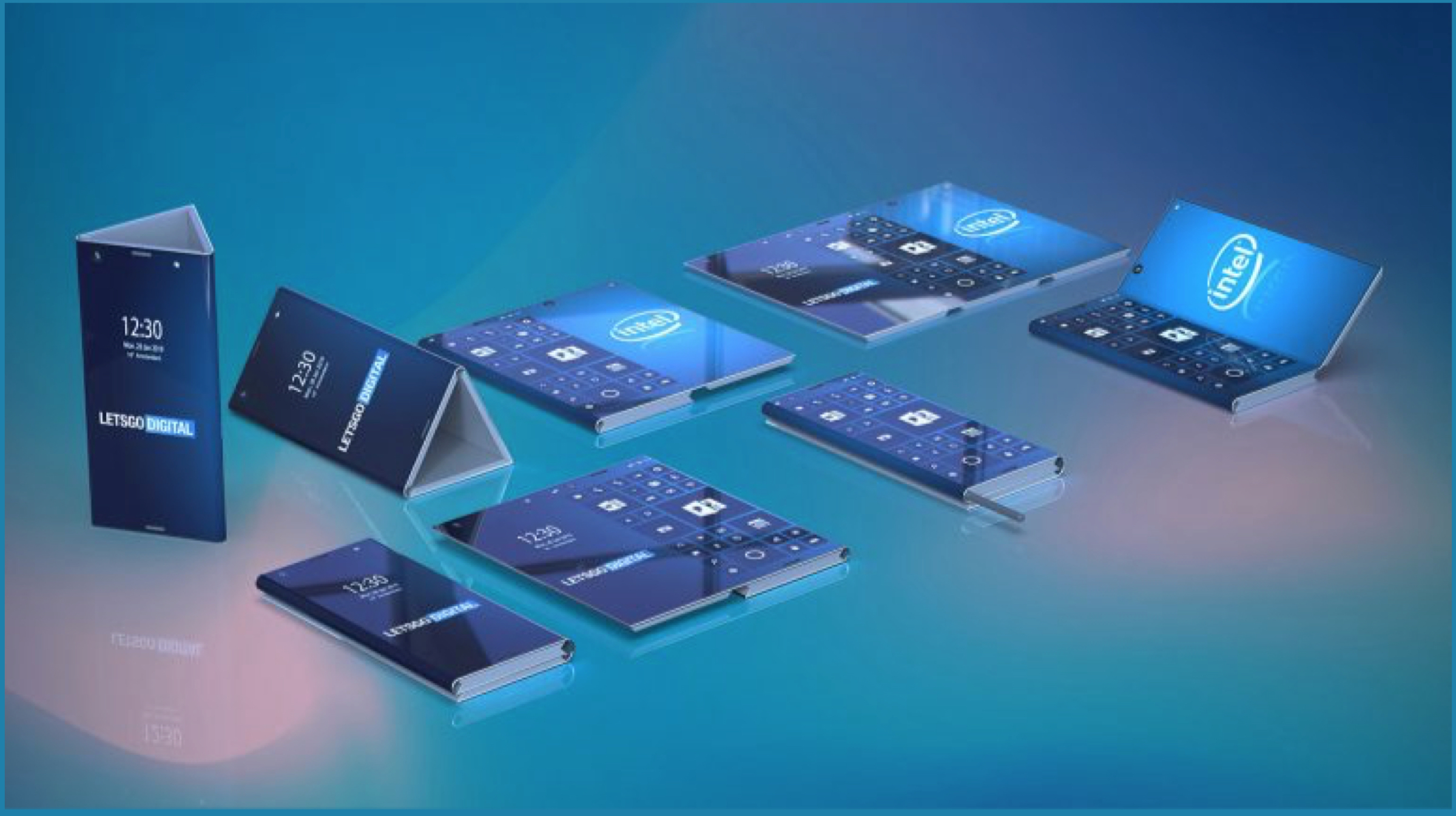Intel has finally patented a foldable smartphone which has three different display sections to create an extra large screen. It will run on Windows OS and will probably be equipped with a Stylus pen.
Intel Partnering With Microsoft
 For such a venture, it seems that Microsoft will enter into a partnership with Intel. At Computex 2018, Intel put forward two prototypes, which included the before-mentioned foldable smartphone and a notebook, also codenamed as the Tiger Rapids Project. The documentation by LetsGoDigital shows a folding smartphone that is made up of three screen parts. It has also released some 3D renders for the same.
For such a venture, it seems that Microsoft will enter into a partnership with Intel. At Computex 2018, Intel put forward two prototypes, which included the before-mentioned foldable smartphone and a notebook, also codenamed as the Tiger Rapids Project. The documentation by LetsGoDigital shows a folding smartphone that is made up of three screen parts. It has also released some 3D renders for the same.
About The Device
 Intel now has a design patent for the device with the foldable panels. Needless to say, the device looks pretty amazing. In the normal state, the device is fully folded for one-handed usage. The device is supposed to be bezel-less. All major components and sensors are placed under the display of the device. When the device is unfolded, it can be used as a mobile workstation.
Intel now has a design patent for the device with the foldable panels. Needless to say, the device looks pretty amazing. In the normal state, the device is fully folded for one-handed usage. The device is supposed to be bezel-less. All major components and sensors are placed under the display of the device. When the device is unfolded, it can be used as a mobile workstation.
 Surprisingly, the Intel foldable smartphone can be unfolded twice, which means that it is made up of three display parts. Also, the device has two cameras per screen section, so that’s six cameras in total. On top of that, the Intel smartphone is equipped with a stylus. Oddly resembling the S-Pen, it magically slides into the corner of the smartphone housing. Probably, the Stylus is held in place by a magnet of sorts.
Surprisingly, the Intel foldable smartphone can be unfolded twice, which means that it is made up of three display parts. Also, the device has two cameras per screen section, so that’s six cameras in total. On top of that, the Intel smartphone is equipped with a stylus. Oddly resembling the S-Pen, it magically slides into the corner of the smartphone housing. Probably, the Stylus is held in place by a magnet of sorts.
Implications Of The Intel Foldable Smartphone
 Also Read : More Images Of The Samsung Galaxy S10 Leak
Also Read : More Images Of The Samsung Galaxy S10 Leak
An interesting advantage of the foldable smartphone is the fact that you can actually fold the screens towards each other and lock them in place, creating a triangle. You can then place the device on a table, just like an alarm clock. Obviously, there can be a lot more helpful implications for the same. But you can be sure that it will turn heads towards the device. It doesn’t seem likely to be in the market during the near future, but it’s very intriguing that tech giants are actually trying to do so.

Leave a Reply